
© By: David E. J. Pepin, 2005
|
|

© By: David E. J. Pepin, 2005
This Kabuto and Mempo are most likely from approximately the Keicho Era (c-1596), which is also considered late koto-early Shinto and is
appears to be from the Myochin School, which was considered the leading
school of armourers in the 16th century. It is of the Suji-Bachi design,
clearly struck across the top and again on the side, or in the same blow,
removing one of the fukigaeshi. (turn backs). On the remaining fukigaeshi is
the Mon of the Ikeda (I) clan. 62 plate Kabuto are rare and would have
been similar in price at the time to a high quality Katana. This type of
Kabuto was not in the price range of the average samurai.
The Mayedate (center crest) has the Mon of Ikeda II, which
resembles a moth. Meaning that whoever owned this Kabuto served under both Ikeda I
and II, who fought against Tokogawa Iyeyasu. The battle of Sekigohara in
1600, was the last major and most significant battle ever fought in Japan. Iyeyasu commanded 80,000 men against forces led by Toyotomi Hideyori
and 130,000 of his men. When the slaughter finished, Hideyori's army was
routed leaving behind 30,000 dead. After this battle came 250 years of peace.
Original battle damage is seldom seen on Kabuto. Restoration experts
in
Japan have a strong opinion about not repairing them, as battle damaged
Kabuto are extremely rare. The liner is in excellent condition and has
not been
removed to check for a signature. It also has cross straps for added
strength.
There are original repairs done on the bowl. Holes were bored in the
plates, and
a device inserted to pull the
plates back into position, then secured from the interior. They were
then filled
with plugs, some of which have fallen out over the centuries. Both the
plugs and
the interior of the repair holes show the same original patina as on the
bowl,
indicating the repairs were done hundreds of years ago.
Kabuto were initially developed to protect against attack. For the
Samurai
it was not only for protection, but also to identify him, to advertise
his
prowess on the battlefield and to show his social status and even his
religious
fervor. The Early sixteenth century saw the introduction of multi plate
helmets frequently referred to as "Suji - Bachi" (Multi-plate helmet of which
the
rivets are counter sunk, leaving the flanged edges of the plates
prominent).
"Suji" directly translates into English as, rib or flange, with plates
that are
riveted together to form a bowl. The helmet is still strong, and heavy.
The
surface is in a russet iron finish. The Tehen (center top of a helmet) holds the ends of the plates
together with the Tehen kanemono (decorative ornament). The Tehen is also called
"Iki dashi no ana" or ventilation hole. This provided an additional
advantage
of air circulation. The Shikoro, for neck protection, is constructed of lacquered iron
and are
still intact showing some signs of wear. The bottom of the Shikoro is
lined with
bear fur. Bears were/are common to northern Japan At the back of the
helmet is a
ring (horotsuke no kwan), in old times used to fasten a cape or banner.
Later in
history to this ring, the Agemaki bow (cord with tassels) was fastened
to stop
the ring from rattling.
The Mempo, (meaning face and cheek), is lacquered iron with Cinnabar
red
lacquered interior. The interior substantiates its repeated use on the
battlefield. This is shown by the rust and chipping of the lacquer near
the
upper lip and nostril. This would have occurred from the heavy breathing
during
battle. This type of Mempo is also known as "Meno Shita Ho", which covers the face and nose below the level of the
eyes. It
is a half mask with wrinkles, gilt teeth and a mustache, showing a
savage
violent expression. The mustache is made from brown bear fur and
attached to a
removable nose piece. Hooks on the cheeks are to fasten the helmet cord.
Hanging
below the Mempo is the Yodarekake. It is a throat protector of lame
plates, made
of 4 closely stitched plates. This piece was brought to the USA shortly
after
the close of WWII and was one time on display in a
Museum in Japan
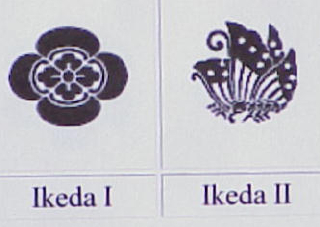
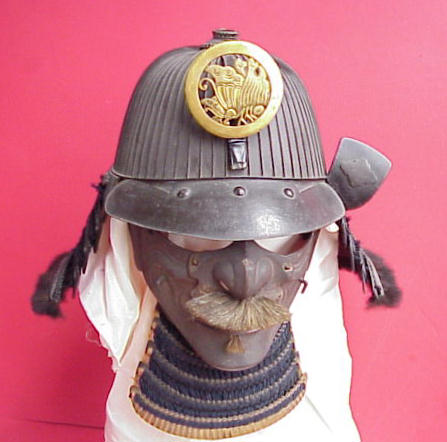
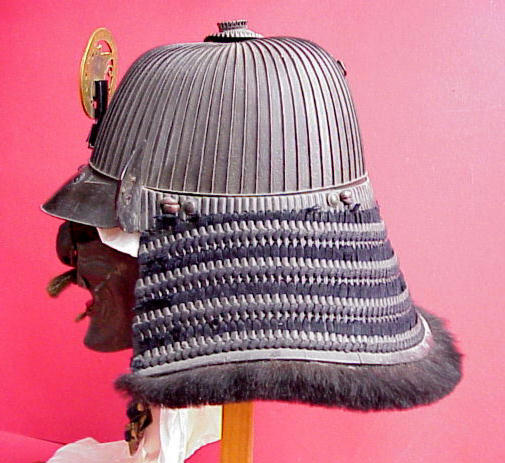
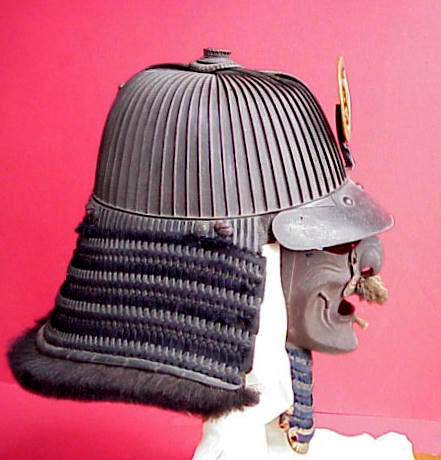
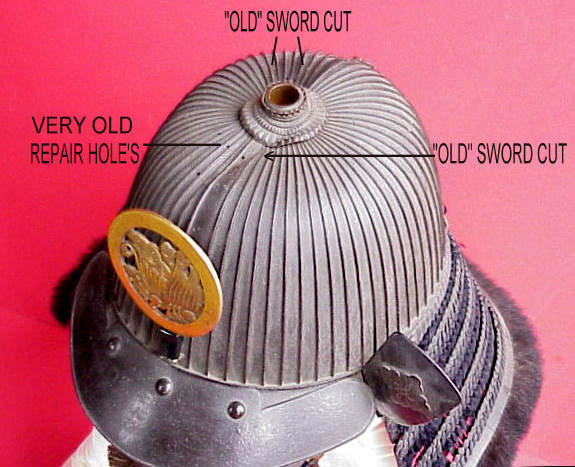
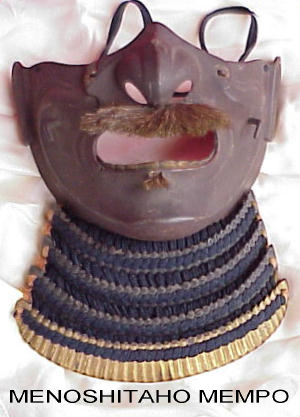
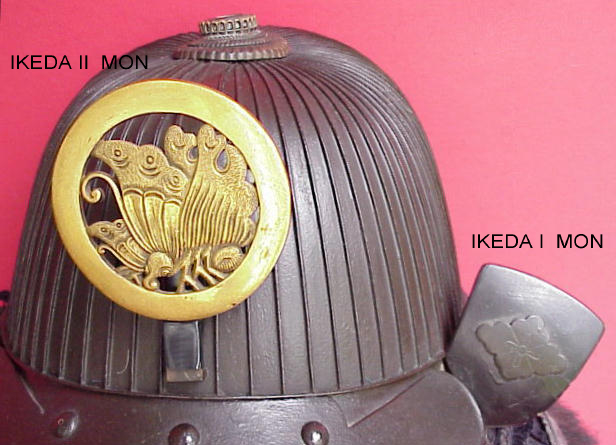
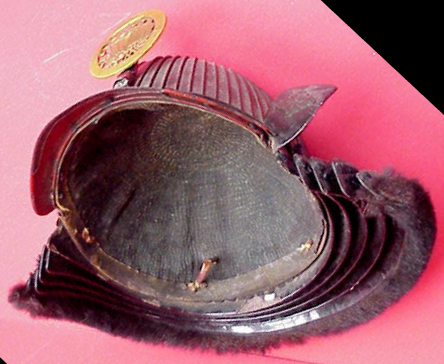
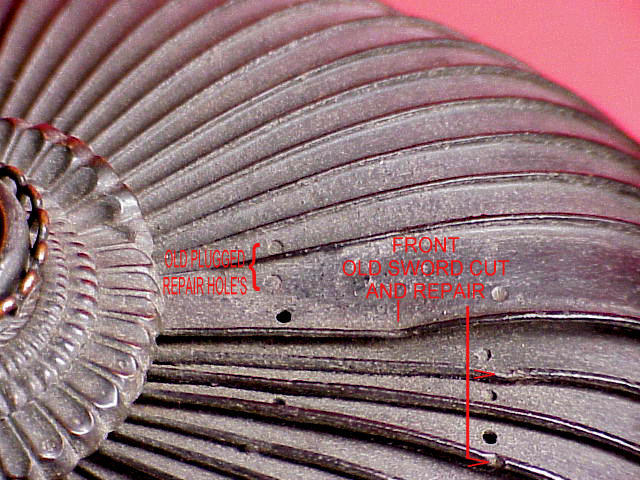
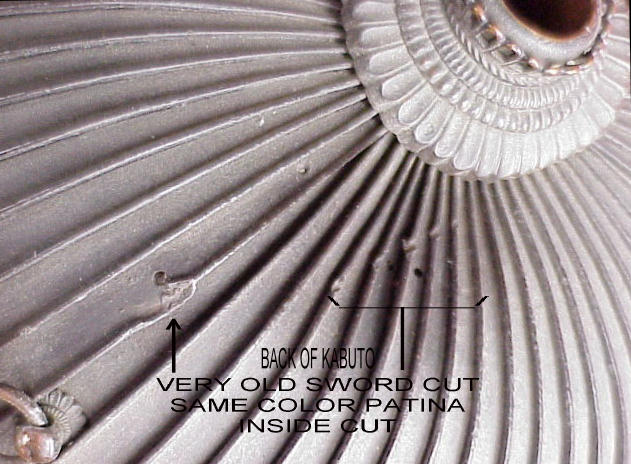
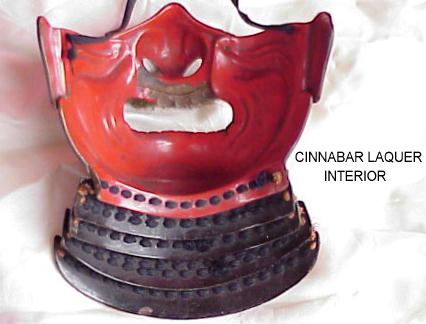
This Kabuto has been Sold, 7/26/05.
If you wish to purchase a Japanese Sword or other items please view our Home page for other items for sale or contact us directly via email, please include specifics of what you seek, i.e.: Katana, maker, era, price range etc.
